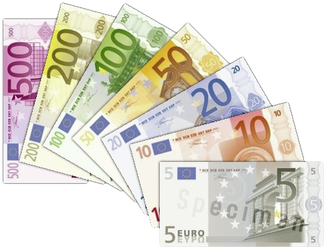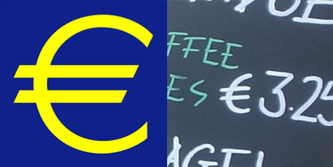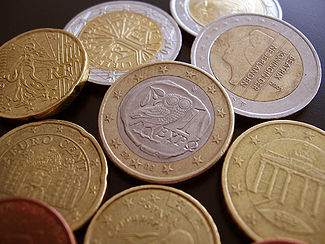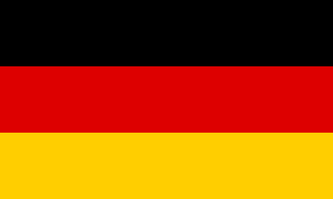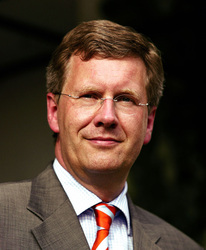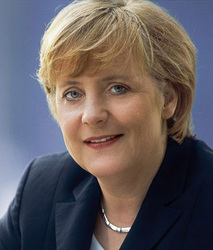Willkommen in Deutschland! (Welcome to Germany!)
As you, noble visitor, have probably figured out, we're not in Germany, yet this website is entirely devoted to Germany! This site will take you through a mind - boggling journey as we examine Germany's demographics, as well as his past, present and possibly his future. You might be thinking, however, why is Germany so important? Why is it important to read the sections? Well, being one of the largest, powerful and fastest growing countries in Europe, a website devoted to such a powerful country, needs a lot of respect! Continue reading through these sections, and, I assure you, your mind will have at least 300% more knowledge of this fabulous and incredible country.
An Introduction to Germany
Location and General Facts

Germany is located in central Europe, and is also surrounded by two seas: the North sea in the North - West and the Baltic Sea in the North - East. The countries surrounding Germany are the Netherlands, Poland, Belgium, France, Luxembourg, Switzerland, Liechenstein, Austria and the Czech. Republic. The total area of Germany is 357, 022 kilometers squared, which is the seventh largest area by country in Europe. The population of Germany is an incredulous 82, 282, 988 people (July, 2010), making it the second largest country in Europe, next to Russia with a whopping 141, 850, 000. The capital and largest city of Germany is Berlin, with an approximate population of 3, 410, 000, larger than the population of Toronto. Just like Canada, Germany is divided into make different states, while Canada is divided by provinces. There are a total of 16 states. (US Department of State)
Economy
Germany, with one of the largest and most successful European economies, got the most at times of success and was the hardest hit by the Depression. Fortunately, Germany recovered with great success and is now better than ever. The GDP per Capita of Germany is around 45,000 dollars. Germany's Gross Domestic Product is 3, 673, 000, 000, 000 US dollars (2008). This is the fifth largest GDP in the world and the largest in Europe! The main composition of Germany's GDP are services (about 72%), the industries (27%) and agricultural business (1%). (Wikipedia)
The currency of Germany is the Euro, as like most European countries. The Euro is the second most frequently used currency in the world, under the US dollar. Many have adopted the Euro, especially territories in northern Africa, which have a currency similar to it. Countries in Europe who use the Euro are a part of the Eurozone, which is basically most of Europe, and Germany (being in central Europe as well) is a part of it. Inflation in Germany went up by about 1.3% since October 2010. (Wikipedia)
The currency of Germany is the Euro, as like most European countries. The Euro is the second most frequently used currency in the world, under the US dollar. Many have adopted the Euro, especially territories in northern Africa, which have a currency similar to it. Countries in Europe who use the Euro are a part of the Eurozone, which is basically most of Europe, and Germany (being in central Europe as well) is a part of it. Inflation in Germany went up by about 1.3% since October 2010. (Wikipedia)
Left to Right: The Euro in Many Bills, the Euro's symbol and the coins of the Euro.
Trade
Germany's main traders when it comes to exporting and importing goods are France, the U.S., Netherlands, the U.K, Belgium and China. It's main industries and skills include chemicals, engineering, motor vehicles, textiles, electronics and beverages. Well known for the latter, Germany owns many worldwide famous companies such as Volkswagen and the BMW. Germany exported, in 2009, 1.12 trillion dollars worth of goods, specializing in machinery and chemicals. This gave them the title of the second largest exporter of goods in the world in 2009, and they still keep this title. Germany imported about 931 billion dollars of goods in 2009, mainly importing food, textiles, metals, some chemicals and some vehicles. Problems with trade though during the recession has made Germany actually lose money in the year of 2009, with total revenues of 1.4 trillion dollars and expenses of 1.55 trillion dollars. Germany is also in a ton of debt with an incredible 2.6 trillion dollars. It is confident, however, that if there isn't another recession, Germany will lessen its debt and continue to thrive as a powerful European country. (Wikipedia, World Factbook)
The People of Germany
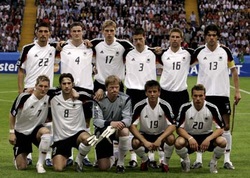
Citizens born in Germany or known as Germans, unless they are of another ethnic background. The groups of peoples living in Germany go as follows:
The Main Language used in Germany is German. Religion wise, a majority of Germans are Protestant or Roman Catholic. (to the right -> German soccer team) (Wikipedia)
- 91.5% are German
- 2.1% are Turkish
- 6.4% are others, including Italians, and many from Poland and Serbia
The Main Language used in Germany is German. Religion wise, a majority of Germans are Protestant or Roman Catholic. (to the right -> German soccer team) (Wikipedia)
National Anthem
Sung in German
Einigkeit und Recht und Freiheit
Für das Deutsche Vaterland.
Danach laßt uns alle streben,
Brüderlich mit Herz und Hand.
Einigkeit und Recht und Freiheit
Sind des Glückes Unterpfand.
Blüh' im Glanze dieses Glückes,
Blühe deutsches Vaterland.
Einigkeit und Recht und Freiheit
Für das Deutsche Vaterland.
Danach laßt uns alle streben,
Brüderlich mit Herz und Hand.
Einigkeit und Recht und Freiheit
Sind des Glückes Unterpfand.
Blüh' im Glanze dieses Glückes,
Blühe deutsches Vaterland.
Translated into English.
Unity and Rights and Freedom
For the German Fatherland
Let us all strive for that
Brotherly with heart and hand
Unity and Rights and Freedom
Are the foundation for happiness
Bloom in the glow of happiness
Bloom German Fatherland (CountryReport)
Unity and Rights and Freedom
For the German Fatherland
Let us all strive for that
Brotherly with heart and hand
Unity and Rights and Freedom
Are the foundation for happiness
Bloom in the glow of happiness
Bloom German Fatherland (CountryReport)
Politics and Government
Germany has a Federal Republic Government, that was founded in 1949. It consists of many small states (16 to be exact), all of which have their own small government. Each one has a say in the whole country, when it comes to implementing new laws and organizing the country. There are also many municipal governments for each city. The president, currently, is Christian Wulff, with the chancellor Angel Merkel. (Infoplease) Germany's official name is the Federal Republic of Germany, with the German Flag. Each colour of the German Flag means a word; they are "unity, law and freedom." (left to right -> the flag of Germany, Christian Wulff, Angel Merkel) (WikiAnswers)
Culture
Germany is a culturally diverse country. Over Germany's years, however, a few areas have prominently shown out as the most developed areas. For example, their literature, science, and work in the arts are a force to be reckoned with. In Literature, we have nine Germans who have won the Nobel Prize, including Thomas Mann and Herman Hesse. We also have Martin Luther, who translated the bible into German, spreading Christianity and affecting the outcome of Europe. He also made the Protestant religion, opposing the Roman Catholic one. In Science, we have the "everyone knows" person in the world, Albert Einstein. We also have Rongten, who discovered x - rays. Later, in 1901, he won the Nobel Prize of Physics, and was the first to do so in Germany. In the past as well, we have Gutenberg, who made the first movable press, which allowed the spreading of ideas and helping to end the Dark Ages. In Music, we have Ludwig van Beethoven, a genius who is famous for his many symphonies and pieces of work, as well as (who can forget) Mozart and Johann Sebastian Bach. Currently, Germany has helped in the development of synthesizers and electronic music, and annually host many rock
festivals for the public. When it comes to philosophy, however, German is one of th leading countries. We have the most thinkers, philosophers and poets in German's history that many call Germany the "land of poets and thinkers." Many, such as Immanuel Kant, played an important role in the development of Europe. We also have thinkers like Marx and Engels who came up with the idea of communism. In the arts, we have beautiful pieces of architecture, such as the church shown in the photo gallery at the bottom of the page. Cuisine, although maybe not the most notable, has made a profound impact on Germany, as they are known for their meats, deserts and (especially) alcoholic drinks, such as beer. In sports, Germany is known for their soccer, and they use it as a pastime all around the country. They even have the Allianz Arena, which has made the title of being one of the world's most known and best football stadium. (Wikipedia)
festivals for the public. When it comes to philosophy, however, German is one of th leading countries. We have the most thinkers, philosophers and poets in German's history that many call Germany the "land of poets and thinkers." Many, such as Immanuel Kant, played an important role in the development of Europe. We also have thinkers like Marx and Engels who came up with the idea of communism. In the arts, we have beautiful pieces of architecture, such as the church shown in the photo gallery at the bottom of the page. Cuisine, although maybe not the most notable, has made a profound impact on Germany, as they are known for their meats, deserts and (especially) alcoholic drinks, such as beer. In sports, Germany is known for their soccer, and they use it as a pastime all around the country. They even have the Allianz Arena, which has made the title of being one of the world's most known and best football stadium. (Wikipedia)
From Left to Right: The Allianz Arena, Albert Einstein, Ludwig van Beethoven and a Forest Black Cake (German Specialty)
Climate, Flora and Fauna
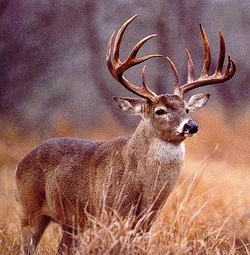
The climate of Germany is perfect for any family who doesn't like the switching of freezing temperatures and then over 30 degree days. Any coastal area, meaning northwestern and northeastern Germany, generally has a warmer climate, much like Nova Scotia. This is due to the warm winds that come in from the sea. Mainland Germany has a more variety of temperatures, as it experiences both warm and cold seasons. For Flora, we have typical Middle Europe type plants and trees: Oaks, Beeches and Conifers in forest areas. In the Mountains, we have Fir and Spruce trees. Germany has many different species of plants, with distinct forms of flowers, plants (ferns), moss and fungi. In any areas on lower elevations on a sand plain, we have larch and pine. For Fauna, Germany has many different kinds of wild animals, usually found in forests. This includes: wild boar, fox, moulfon, badger, hare and deer. Sometimes, one might be lucky enough to stumble across a deer. When it's Fall, one might come across many birds who migrate and fly across Germany. In rivers and streams, as well as in the Seas (especially the North Sea), we have a variety of fish that live there. To the left is a picture of a deer. Beware, however! Don't go to close, and always stay a fare amount of space away. (National Encyclopedia and German Culture -> two sources)
Extra Facts and Fun Stuff
Well, I'm pretty sure you've been briefed on Germany! So here are some fun facts for you to enjoy!
Other cities in Germany include (from largest to smallest): Hamburg, Munich, Cologne, Frankfurt, Essen, Dortmund, Stuttgart, Düsseldorf, Bremen, Hanover, Duisburg (Infoplease)
Other cities in Germany include (from largest to smallest): Hamburg, Munich, Cologne, Frankfurt, Essen, Dortmund, Stuttgart, Düsseldorf, Bremen, Hanover, Duisburg (Infoplease)
- Martin Luther, a monk, made the Protestant Religion by nailing the 95 Theses (ROA! (-> Wikipedia)
- most of the population is either Protestant or Roman Catholic, about divided equally! (Wikipedia)
- Germany lost money in 2009, and has, even though might think as a lot of debt, barely any! U.S.'s debt with China is a whole lot bigger! (Wikipedia)
- Even though Germany is located, on a horizontal scale, past the border of the U.S. and Canada, he is apart of the Arctic Zone. However, the temperatures are much like middle U.S.! Why is that? (German Culture)
- Go to the next Page!
From Left to Right: A Map of Germany in the world, A map of Germany in Europe, A Church in Berlin, Berlin at Night, Berlin's Towers and Buildings
